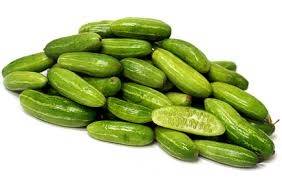There are a variety of recipes from all over the world that list ivy gourd as the main ingredient. It is often compared to bitter melon. The fruit is commonly eaten in Indian cuisine. People of Indonesia and other southeast Asian countries also consume the fruit and leaves. In Thai cuisine it is one of the ingredients of the Kaeng khae curry.[8] Cultivation of ivy gourd in home gardens has been encouraged in Thailand due to it being a good source of several micronutrients, including vitamins A and C. In India it is eaten as a curry, by deep-frying it along with spices; stuffing it with masala and sauteing it, or boiling it first in a pressure cooker and then frying it. It is also used in sambar, a vegetable and lentil-based soup.
In traditional medicine, fruits have been used to treat leprosy, fever, asthma, bronchitis and jaundice. The fruit possesses mast cell stabilizing, anti-anaphylactic and antihistaminic potential.[5] In Bangladesh, the roots are used to treat osteoarthritis and joint pain. A paste made of leaves is applied to the skin to treat scabies.
Ivy gourd extracts and other forms of the plant can be purchased online and in health food stores. It is claimed that these products help regulate blood sugar levels. There is some research to support that compounds in the plant inhibit the enzyme glucose-6-phosphatase.[7] Glucose-6-phosphatase is one of the key liver enzymes involved in regulating sugar metabolism. Therefore, ivy gourd is sometimes recommended for diabetic patients. Although these claims have not been supported, there currently is a fair amount of research focused on the medicinal properties of this plant focusing on its use as an antioxidant, anti-hypoglycemic agent, immune system modulator, etc.
Nutrition - Ivy gourd is rich in beta-carotene.




